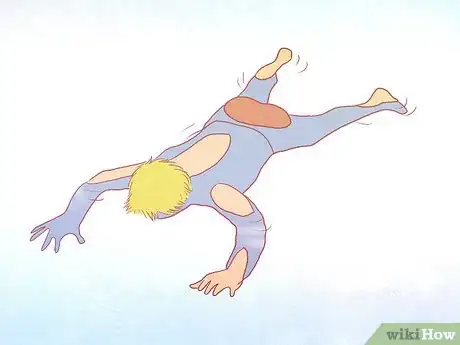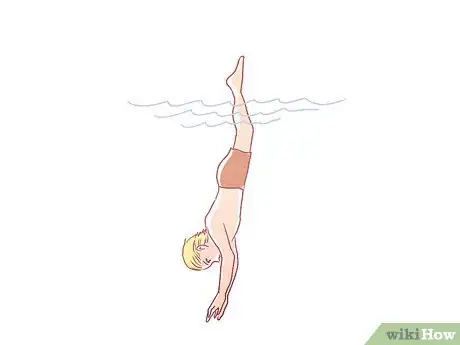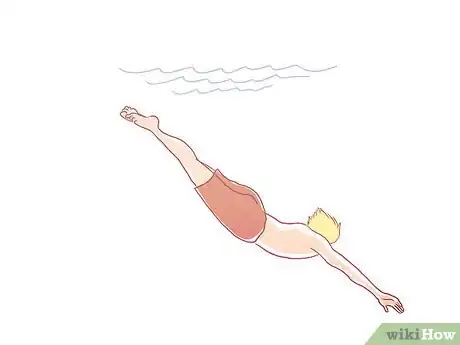X
wikiHow is a “wiki,” similar to Wikipedia, which means that many of our articles are co-written by multiple authors. To create this article, 12 people, some anonymous, worked to edit and improve it over time.
This article has been viewed 93,490 times.
Learn more...
Diving down towards the bottom of a pool (or other body of water) doesn't have to involve diving boards or even getting out of the water! This article explains how to do a surface dive, which is a dive from the surface of the water to the bottom of the pool. There are two methods, these will be explained in the following steps.
Steps
-
1Begin by floating or swimming face-down, with your arms extended out in front of you.[1]
-
2Sweep your arms back, bend your knees, tuck your legs toward your chest & bend your waist forward, so your head is pointing toward the bottom.[2]Advertisement
-
3Straighten your legs and your body until you're upside-down & perpendicular to the surface, with your legs sticking up out of the water. Extend your arms towards the bottom & point your toes.[3]
-
4Once in this upside-down position, the weight of your legs in the air above will push you underwater.
-
5Or,
-
6Tread water in the deep end of the pool.[4]
-
7While treading water, kick your legs faster and take a breath of air. This will raise you up a little and provide momentum.
-
8Stop kicking and keep your body straight.
-
9Push the water up with your arms, then slide them back down. Repeat until you reach the bottom or run out of breath.[5]
Advertisement
Community Q&A
-
QuestionWhen do I use a head first surface dive?
 Community AnswerWhen you feel you have enough air to manage it. In this way you need to inhale more air before trying the dive.
Community AnswerWhen you feel you have enough air to manage it. In this way you need to inhale more air before trying the dive. -
QuestionCan I also use a flutter kick and breaststroke kick to get down to the bottom of the pool?
 Community AnswerYes, but using your legs AND your arms will be most effective. While flutter kick is faster, breaststroke kick takes less energy.
Community AnswerYes, but using your legs AND your arms will be most effective. While flutter kick is faster, breaststroke kick takes less energy.
Advertisement
Warnings
- Stop diving and come to the surface if you can't blow air out of your nose anymore. This means you don't have any more air and risk drowning.⧼thumbs_response⧽
- Do not wear earplugs when diving deep. The water pressure can drive the earplugs deep into the ear canal, damaging your eardrum or worse.⧼thumbs_response⧽
- Do not wear goggles when diving deep. The water pressure can be damaging to your health. A swimming mask that covers the nose is acceptable however, because you can blow air into the mask, equalizing the pressure.⧼thumbs_response⧽
Advertisement
References
About This Article
Advertisement






























































